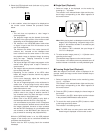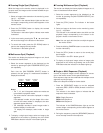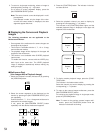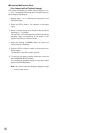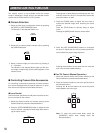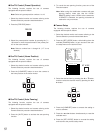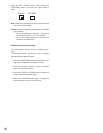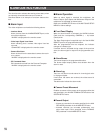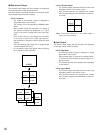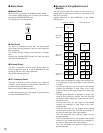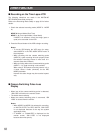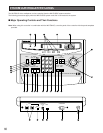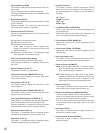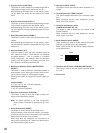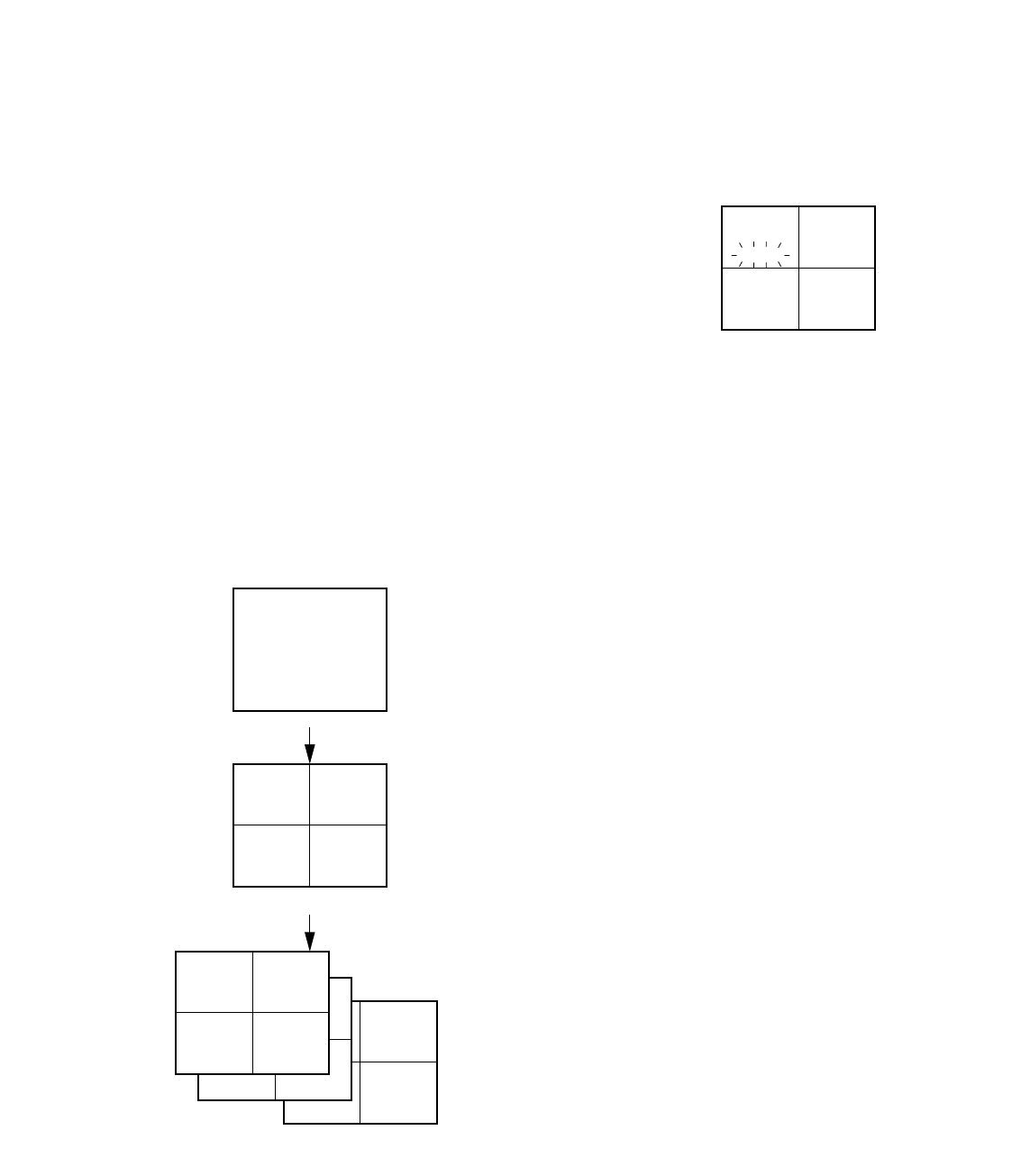
60
● Multiscreen Output
The alarmed input image and alarm display are displayed
on the multiscreen monitor as shown below.
Described below are several examples; the selected mode
varies, depending on the menu setting.
• Alarm Link Mode
• The image of the alarmed camera is displayed in
single spot mode on the monitor.
The indicator in the corresponding CAMERA button
blinks.
• When multiple alarms are activated, the images of
the alarmed cameras are displayed on a quad
screen in the order of upper left to lower right seg-
ment.
From the fifth alarm on, the images are overwritten
in the order of upper left to lower right segment,
then displayed in sequence with the previous quad
images.
• The dwell time for each step can be programmed
on the ALARM SETUP menu.
• An incomplete image may appear when switching
the 4-segment screen sequence.
• Alarm Indication Mode
• The camera images selected before the alarm was
activated remain on the monitor screen.
• If the alarmed channels are displayed, the camera
title and alarm display blink alternately on the moni-
tor screen.
Note: If the alarm channel is in the freeze mode, it
returns to normal viewing.
● Spot Output
The alarmed input image and alarm display are displayed
on the spot monitor as shown below.
• Alarm Spot Mode
• The alarmed camera image is displayed in single
spot mode on the monitor.
When another alarm is received, the display switch-
es to the most recent alarmed camera image in sin-
gle spot mode.
• The camera title and alarm display blink alternately
on the monitor.
• Alarm Ignore Mode
• The camera images selected before the alarm was
activated remain on the monitor screen.
• If the alarmed channels are displayed, the camera
title and alarm display blink alternately on the moni-
tor screen.
ALARM ALARM
ALARM ALARM
ALARM ALARM
ALARM ALARM
ALARM
ALARM ALARM
ALARM ALARM
ALARM ALARM
ALARM ALARM
[Spot]
[Quad Spot]
[Quad Sequence]
ALARM



